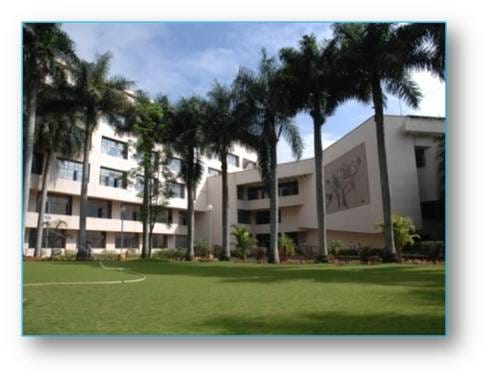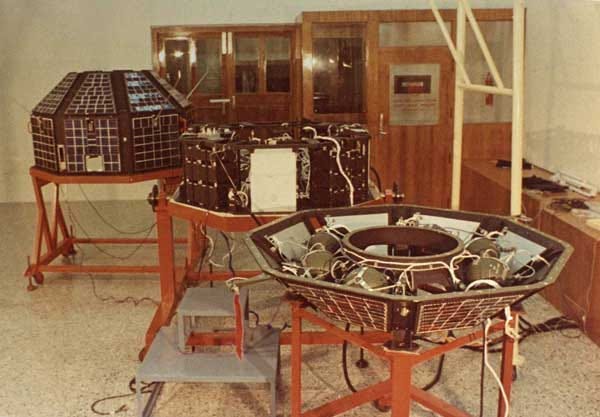Aryabhata: Story Behind India's First Satellite
Know much more about the story of India's first satellite Aryabhata started under Dr Vikram Sarabhai and Prof U R Rao of ISRO.
"Name the first satellite of India." Each one of us has answered this question at least once in our lifetimes. But very few of us know the story of this 358 Kg spacecraft, Aryabhata. The satellite shares its name with the great ancient astronomer. Names like Mitra and Jawahar were contending as well. Prime Minister Indira Gandhi chose the name "Aryabhata". Know much more about how the Indian Space Research Organisation (ISRO) under the leadership of Dr Vikram Sarabhai started the satellite programme with Aryabhata? How Professor UR Rao instituted and led the Satellite Systems Division in Bangalore? What science and technology Aryabhata established?
Dr Vikram Sarabhai was a visionary. After dedicating the Thumba Equatorial Rocket Launching Station (TERLS) to the United Nations in 1968, Sarabhai requested Prof UR Rao to write a proposal to justify a satellite programme for India. Prof UR Rao responded in 2 weeks and was asked to lead the programme. After almost a year of continuous nudging by Sarabhai, Professor accepted the responsibility in 1971 and hence the story of Aryabhata commenced.
Team and Institution Building
UR Rao, along with 25 of his colleagues at PRL, Ahmedabad started working. Shri PP Kale had returned from NASA after a training programme and working on satellite electronics at Space Science and Technology Centre (SSTC), Trivandrum. Around 25 scientists and engineers from this group along with 25 experts from PRL, joined and formed the Satellite Systems Division (SSD). The specialists in the field of structures were requested from the Structures Group at SSTC. Finally, the team started designing a 100-Kg satellite to be launched by Scout launch vehicle of the USA.
This team worked at SSTC, Trivandrum until the project was approved in 1972. After the approval, the SSD needed a location for the satellite project. Prof UR Rao suggested Bangalore and Hyderabad as possible locations to the ISRO chairman MGK Menon. Two scientists sharing the last name, AS Rao (of Electronics Corporation of India Limited) and UR Rao, researched Hyderabad and Bangalore respectively. They only had one week to explore the facilities and make a final decision. The dedication and enthusiasm of scientists resulted in this fast speed of work.
At Peenya, on the outskirts of the Bangalore, there was a skeleton of a few industrial sheds under construction. Professor UR Rao asked for the first four sheds, each with 5,000 sq feet area. That is where our Indian Scientific Satellite Project (ISSP) started. ISRO remodelled the sheds, built sophisticated electronic laboratories, clean room, thermovac chamber and so on. Until this time Aryabhata had no name.
Indo-Soviet Agreement
When the team had started the design of satellite, it was meant to be launched by the American Scout launch vehicle. But in 1971, the Indian Ambassador to the Soviet Union informed PM Indira Gandhi that the Soviet Academy of Sciences wants to assist launching our first satellite. Sarabhai immediately contacted UR Rao, and an urgent meeting with USSR Ambassador was arranged. Another meeting took place in August 1971, at Moscow. A team of twenty Soviet scientists and four ISRO scientists, after four days of discussion, finalised a free launch for India's first satellite. The dedication of scientists is proven by the fact that Professor UR Rao landed back in Mumbai, briefed Dr Sarabhai at the airport and took a flight to Sydney to attend the Cosmic Ray Conference.
While final details were being laid out with Soviets, the nation was shaken with the news of Vikram Sarabhai's demise in December 1971. The follow-up meeting got delayed. Finally, in February 1972, a meeting was held at Trivandrum. Before the meeting, Mrs Gandhi asked for the justification of such a project. UR Rao told Interim Chairman MGK Menon,
"If we want to go into space, this is the first real opportunity we have. As we are getting a free launch, we can start with minimum amount of money and then build upon it. You just can't go straight to operational communication satellites or remote sensing satellites till you have successfully built at least a couple of experimental satellites and established your capability to build complex satellites."
Prof UR Rao on Justification of Aryabhata for India
Mrs Gandhi asked for the budget for the mission. UR Rao asked for 2 hours to get back with it. A team of four engineers and scientists, S.P. Kosta, K. Kasturirangan, Ashiya, and Tarsem Singh, estimated the total cost to be around about Rs 60 lakh. Prof UR Rao increased it to Rs 3 crore, with a foreign exchange component of Rs 1 crore after accounting for space-grade components. And PM Gandhi approved the mission, "Go ahead and sign the agreement!".
The Satellite
Objectives
The primary objectives of the Aryabhata mission (as explained in a paper by Prof UR Rao) were
Indigenous design and fabrication of a space-worthy system and evaluation of its performance in orbit;
Evolving the methodology of conducting a series of complex operations on the satellite in its orbital phase;
Setting up the necessary ground-based receiving, transmitting and tracking systems; and
Establishing the relevant infrastructure for the fabrication, testing and qualification of such sophisticated spacecraft systems.
To provide Indian scientists with an opportunity to conduct investigations in space sciences, suitable payloads were also included.
Payloads:
X-ray Astronomy
Aeronomy
Solar neutron and Gamma Rays Studies
Technical Details
Quasispherical shape, with 26 flat faces
Mass: 358 kg
Equivalent diameter: 1.59 m in the equatorial plane
Height of 1.19 m
Passive Thermal Control
Body-mounted silicon solar panels with a total surface area of 36,800 cm sq
Rechargeable Ni-Cd chemical batteries with 10 A hr capacity
137.44 MHz PCM/FM/PM downlink at 256 bits/s data rate
148.25 MHz PDM/AM/AM uplink
Spin Stabilised
Launch and Orbital Performance
Aryabhata was successfully launched into a near-earth orbit at 1300 hr IST, on 19 April 1975. The orbital parameters immediately after the injection were apogee height 620 km, perigee height 562 km, and inclination 50.7 degrees.
"Aryabhata became the forerunner of our space programme and provided us the confidence to build state-of-the-art application satellites for communication, remote sensing of natural resources and meteorological investigations."
Prof UR Rao
In the initial phase, the ground station at Bears Lake, USSR controlled the satellite. While during the normal phase the SHAR ground station took over. Aryabhata tumbled initially, and regulator voltage to aeronomy experiment was absent. All other subsystem functioned very well as indicated by 91 different health monitoring parameters. In 45 orbit, the scientific operations were switched off, and the satellite was spin stabilised at 50 rev/min.
Aryabhata orbited for nearly seventeen years ending the story. The experience gained through this experimental satellite was valuable for future programmes in designing operational satellites.
Reddit Post for different papers on Aryabhata
https://www.reddit.com/r/ISRO/comments/g4qgpo/details_about_aryabhata_satellite/




